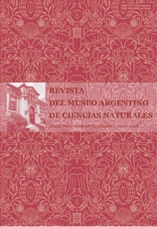La pesca artesanal en la Cuenca del Plata (Argentina) y sus implicancias en la conservación de la biodiversidad
Resumen
Artisanal fish at del Plata basin (Argentina) and its implications for the biodiversity conservation. The aim of this contribution is to consider different issues derived from fish captures from artisanal-commercial fisheries in the Paraná Basin in Argentina. We identify certain impacts related to fishing practices on the involved natural populations and its compromises in ichtiofaunal biodiversity conservation. We consider 17 years of information based on data of fisheries exports for different inland species between 1994-2010. These data includes valuable commercial big sized native fishes like sábalo (Prochilodus lineatus), boga (Leporinus obtusidens), tararira (Hoplias malabaricus), surubí (Pseudoplatystoma spp.), dorado (Salminus brasiliensis) and patí (Luciopimelodus pati), together with several catfish species and minor species as silversides. Freshwater fish exports show a major rise resulting in 331517 ton for these years. The target species is sábalo (88.77 %), other accompanying species are tararira (4.16 %), boga (3.7 %) and Patí (1.35 %) whereas the remainig catches belong to other species. There is a strong rise in the catches of these other species in certain years while there is not a clear legislation for these fish species that allow implementing a proper fishery management along the basin. The importing countries are Brazil, Colombia, Bolivia and Nigeria among others. Since 2003 Colombia buy an average of 50% of inland fisheries exports from Argentina. The analysis historical data (1994-2010) reveals the need to implement measures to control and management of fisheries and its effects on fish biodiversity conservation in the basin.
Texto completo:
PDFEnlaces refback
- No hay ningún enlace refback.

This work is licensed under a Creative Commons Attribution 3.0 License.

